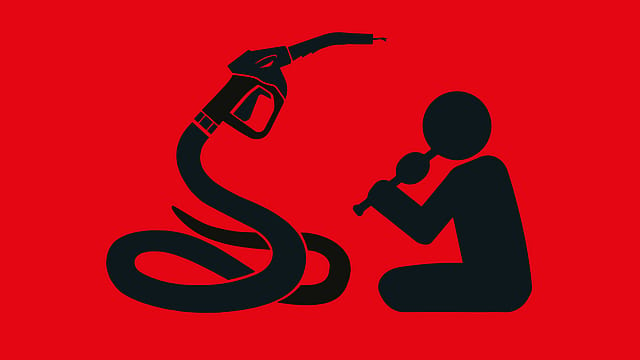The federal structure of fuel prices
ADVERTISEMENT

Meme-makers have been busy over the past couple of months as petrol and diesel prices have been inexorably rising. There’s plenty of oil economics doing the rounds on social media, and people who may not know the difference between crude and Vaseline are all holding forth knowledgeably about the oil import bill. But what is really happening and what, if anything, can the government do?
Global fuel prices went up following an artificial supply crunch caused by the Organization of Petroleum Exporting Countries (OPEC) and Russia. This hits India hard because the country depends heavily on imported oil; India is also one of OPEC’s biggest customers.
The question that’s haunting policymakers today is whether the government should subsidise oil prices (or reduce taxes on oil) till the global situation is resolved, or if it should allow market forces to determine prices.
January 2026
Netflix, which has been in India for a decade, has successfully struck a balance between high-class premium content and pricing that attracts a range of customers. Find out how the U.S. streaming giant evolved in India, plus an exclusive interview with CEO Ted Sarandos. Also read about the Best Investments for 2026, and how rising growth and easing inflation will come in handy for finance minister Nirmala Sitharaman as she prepares Budget 2026.
If the government chooses to go the subsidy route, it could play havoc with its balance of payments (that is, the difference between exports and imports of goods, services, and remittances), say economists like Rathin Roy, director at the New Delhi-based economic think-tank, National Institute of Public Finance and Policy. To maintain this balance, it is essential that consumption of a commodity goes down when its price goes up. By artificially reducing the price, consumption of petrol will not fall.
Oil imports in May 2018 touched $11.5 billion, which pushed the country’s trade deficit to $14.62 billion. Such high trade deficits will have an adverse impact on the current account deficit, as well as on the rupee.
Subsidy may not be the best route to take, but it is equally important that oil prices be brought down. Radhika Rao, economist at DBS Bank, explains that it inflicts additional pain on the economy just as business and consumers return to normalcy after demonetisation and a shift to goods and services tax. It also means that input costs go up, hitting profit margins and ultimately, prices of unrelated goods.
All this has been said often enough. Is there a solution? The possible solution for India would have been to set up a price stabilisation fund to shield consumers from volatile international prices. That, unfortunately, was not done. Instead, windfall gains from low crude prices was used to step up capital expenditure on highway projects and railways and meet the fiscal deficit target.
Look at these numbers. The average annual world price of Brent crude–the best quality—came down from $100 a barrel in 2014 to $54 in 2017. In those years, the NDA government, which swept to power in May 2014, increased excise duty on petrol and diesel 12 times. The benefits of low global oil prices were never passed on to the customer.
Now consider taxes and duties on petrol and diesel. The centre levies an excise duty of Rs 19.48 per litre on petrol and Rs 15.63 on diesel. State governments add a value-added tax (VAT) on petroleum products; this is between 16% and 40% for petrol, and 12% to 29% for diesel.
The retail selling price for a litre of petrol or diesel is arrived at by adding the central excise, the state VAT, and a dealer commission. A percentage of the central excise duty is then transferred to the states, based on the 14th Finance Commission recommendations.
In a recent paper, Soumya Kanti Ghosh, chief economic adviser, State Bank of India, explains that state governments may be better placed to cut fuel prices. “Our analysis shows that at the current crude prices, and extending our analysis to 19 states (overall consumption share is 93% both in petrol and diesel), the states could have gained at least an additional Rs 18,728 crore of revenue or Rs 2,675 crore additional revenue over and above the budget estimates of states revenue for every $1 per barrel increase in oil prices.”
The paper says that foregoing this revenue will “not impact states’ fiscal position”, and states can well afford to cut prices of petrol and diesel by at least Rs 2 a litre. If the central excise duty was to be cut by Re 1, the loss of revenue to the exchequer would be to the tune of Rs 10,725 crore, pushing up the fiscal deficit.
Clearly, states have a solution in their hands. As Ghosh says: “This is the most plausible scenario under the current circumstances.
(This was originally published in the June 15 - September 14 special issue)
